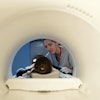Four of the most frequently provided services in a study evaluating low-value services for Medicare costs were for imaging for conditions such as syncope, plantar fasciitis, and low back pain, researchers have reported.
A study led by David D. Kim, PhD, of the University of Chicago evaluated services provided to a 5% random sample of Medicare beneficiaries 65 and over from 2018 to 2020, aiming to identify low-value services (i.e., those that offer little or no benefit and may result in harm such as overdiagnosis) as an approach to reducing Medicare spending. The findings were published August 1 in JAMA Health Forum.
Using eligibility criteria to determine that the services provided were not medically necessary in the included cases, the researchers identified 47 low-value services. The team estimated the potential savings that could be attained by reducing these services based on Medicare payments and the beneficiaries’ out-of-pocket payments. They extrapolated their findings to the entire Medicare population of 65.7 million people to estimate the nationwide impact of these costs.
The group also analyzed spending on six commonly ordered low-value preventive services (screening for chronic obstructive pulmonary disease, bacteriuria, asymptomatic carotid artery stenosis, and prostate-specific antigen tests and electrocardiograms) with a grade D recommendation from the U.S. Preventive Services Task Force (USPSTF).
During the target period of 2018 to 2020, Medicare spending across 2.6 million cases of the identified 47 low-value services for the 3.7 million beneficiaries in the study was $3.6 billion per year, not including the patients’ total annual $800 million out-of-pocket costs.
Of the five most commonly provided low-value services, four were for imaging: plantar fasciitis, headache, and syncope were the first three on the list, while low back pain was fifth (the fourth most commonly provided service was vertebroplasty/kyphoplasty).
The top 20 low-value services accounted for 95% of the annual spending -- $4.2 billion of $4.4 billion. Five of the USPSTF Grade D screening tests analyzed accounted for 59% of the total ($2.6 billion).
The researchers concluded that Medicare reforms targeting spending for low-value services could save billions without compromising the health of patients. Drawing from the data, they said, “eliminating Medicare payments for five USPSTF grade D services could save approximately $2.6 billion annually, achievable through enforcing section 4105 of the Affordable Care Act, which grants the secretary of the U.S. Department of Health and Human Services the authority to provide no payment for a preventive service that has not received a USPSTF grade of A, B, C, or I.”
The researchers also noted that the cost savings they estimated were conservative, as the figures did not take into account any costs incurred by subsequent care for both Medicare and patients after these low-value interventions. Ensuring that guidelines for prior authorization are implemented and followed could deter unnecessary diagnostics and procedures, they suggested, which would also potentially result in savings, as well as reduce risks to patients.
Read the report here.



















